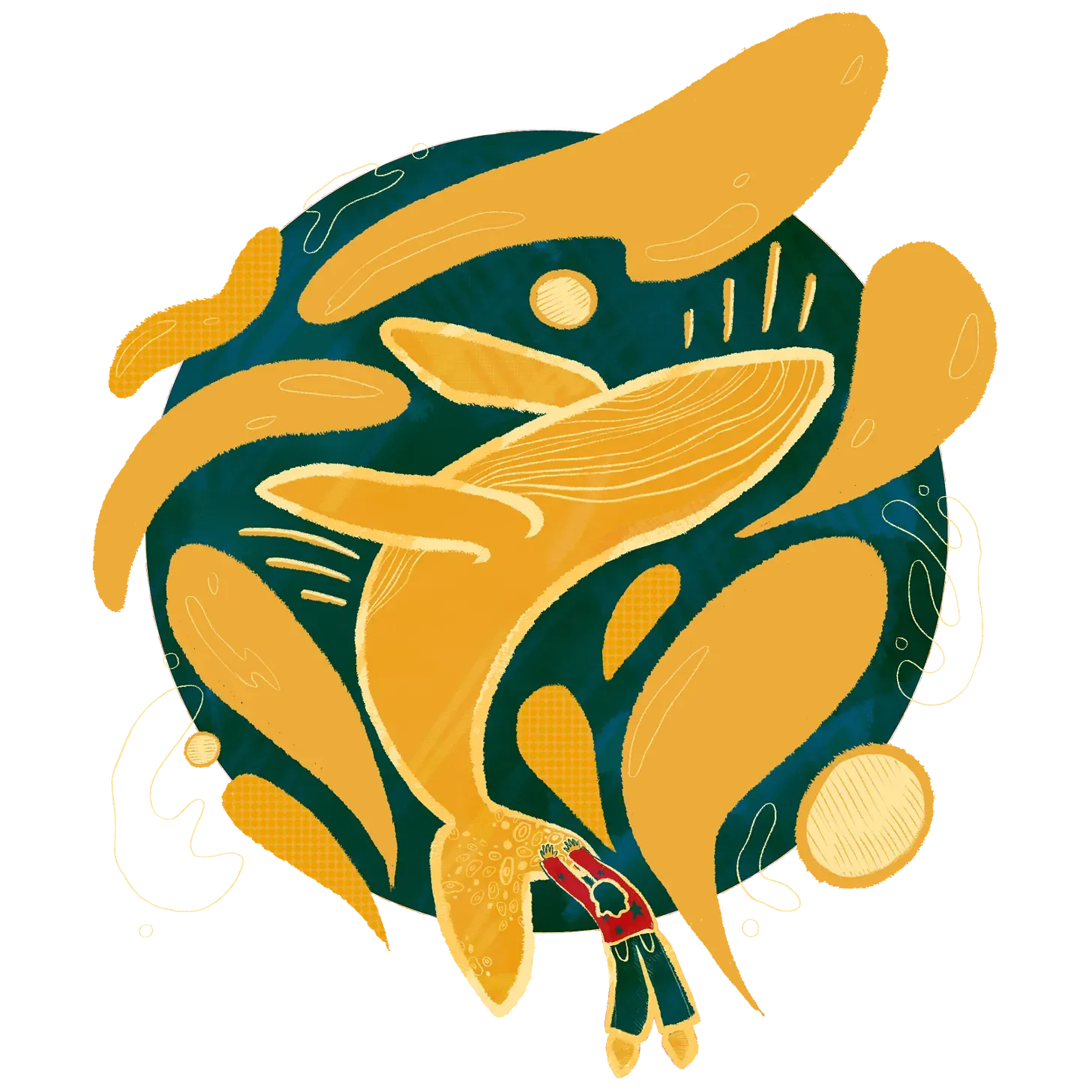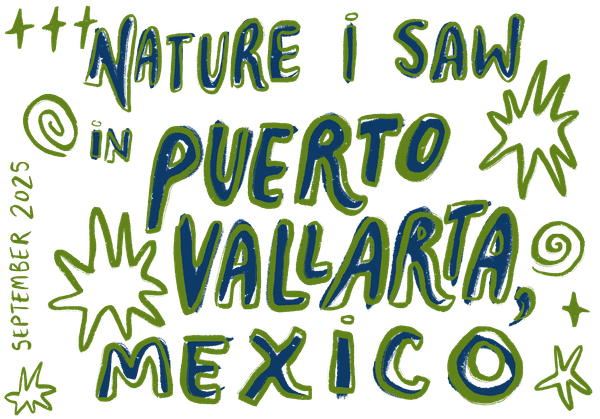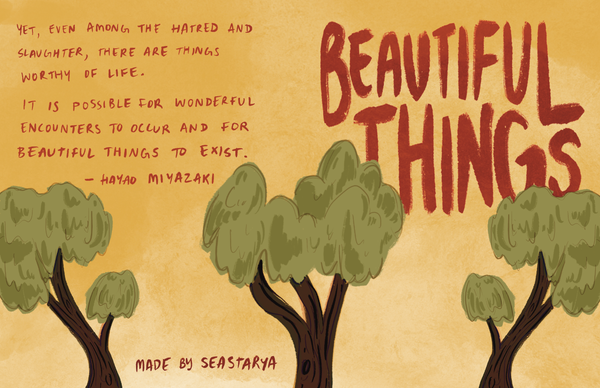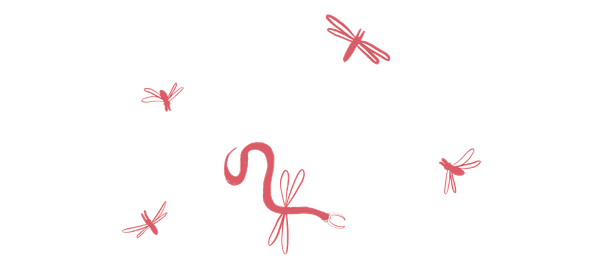trying to go tidepooling? here's what you actually need to know
plus, a mostly trustworthy metric by which to ID rocky intertidal areas, aka places you'll see undeniably cool stuff
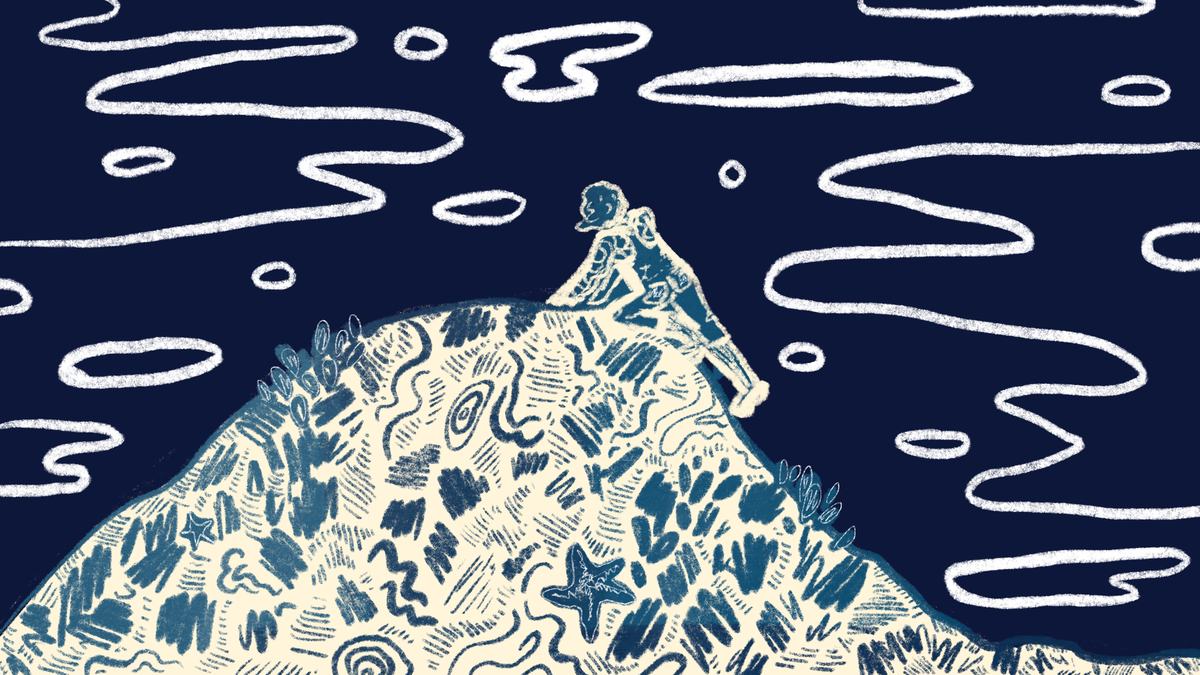
When first trying to identify the best tidepooling sites in LA, I did get irrationally angry with the existing online resources (if I accidentally clicked one more office supply ad while literally just trying to scroll … ), but I also noticed that a lot of these sites didn’t talk much about what to prep or what to look for when you arrive. If I’m planning to go tidepooling, I want to know three things: when low tide is, how I’m getting to the site (and where to park, if it’s a drive), and what I’ll see there. More on how I’ve started compiling info specific to tidepooling spots into a single resource later.
After many subreddit-lurks and trial-outings to the coast, here’s what I’ve learned when it comes to figuring out how to plan a successful and rewarding tidepooling trip — and if you’re also in the LA area, there are a few special notes for you toward the end of this post.

1. Look out for rocky vs. sandy areas
Rocky, sandy, marshy, sludgy, somewhere in between — as long as the area experiences a cycle of rising and falling tides, it’s the intertidal zone. But the kinds of nature you’ll experience in each of these environments will be quite different. On sandy beaches, I’ve primarily encountered animals like sand crabs, bean clams, and the occasional sand dollar or (very precarious) sea cucumber.

2. There’s usually a walk — but it’s worth it!
The most nature-filled tidepooling sites around the LA area that I’ve visited (and most other places I’ve been, too) all involve at least a small trek from the parking lot or bus stop to get to the actual tidepools. This can range from being totally flat to involving steep slopes, depending on where you are — keep an eye out for this when you’re researching. Be sure to bring a water bottle, and maybe some snacks. Hydrate or diedrate! Also, keep an eye out for rattlesnakes. More on that later.
3. Go at low-tide times (which change throughout the year)
I use this site for tide predictions. You can also check out this one. And of course, no predictions are totally exact, but they’re overall accurate and a key way to understand when the best time to go tidepooling is.
A crash course in understanding tide charts: They have lots of scary numbers, but all you really gotta know is to 1) find the date you want to go tidepooling, and 2) look for the numbers next to “low tide” — the lower that number is, the better. The highest and lowest extremes come with King Tides, the next of which are in January. I like to get to tidepooling sites at least an hour before low tide so that I’m not racing the tides as they come back in!
I also really like this more zoomed-out view for how it visualizes the high and low tides across the days with the blue line. (According to this, I will be tidepooling on Christmas. –1.03, are you kidding me?)
4. Choose your shoes (& seaweeds) wisely
You’ll definitely want to wear shoes with good grip that you don’t mind getting wet. I got a pair of rubber boots from a local hardware store that have served me very well. They’re comfortable, can handle the mini-treks involved in getting to some of these sites, and are easy to clean afterward. They also keep my feet warm in cold waters and help protect whatever pants I’m wearing from getting wet … though I do often bring an extra pair of socks anyway because I’ve learned that can’t not fall in the ocean when I tidepool (it’s a disease).
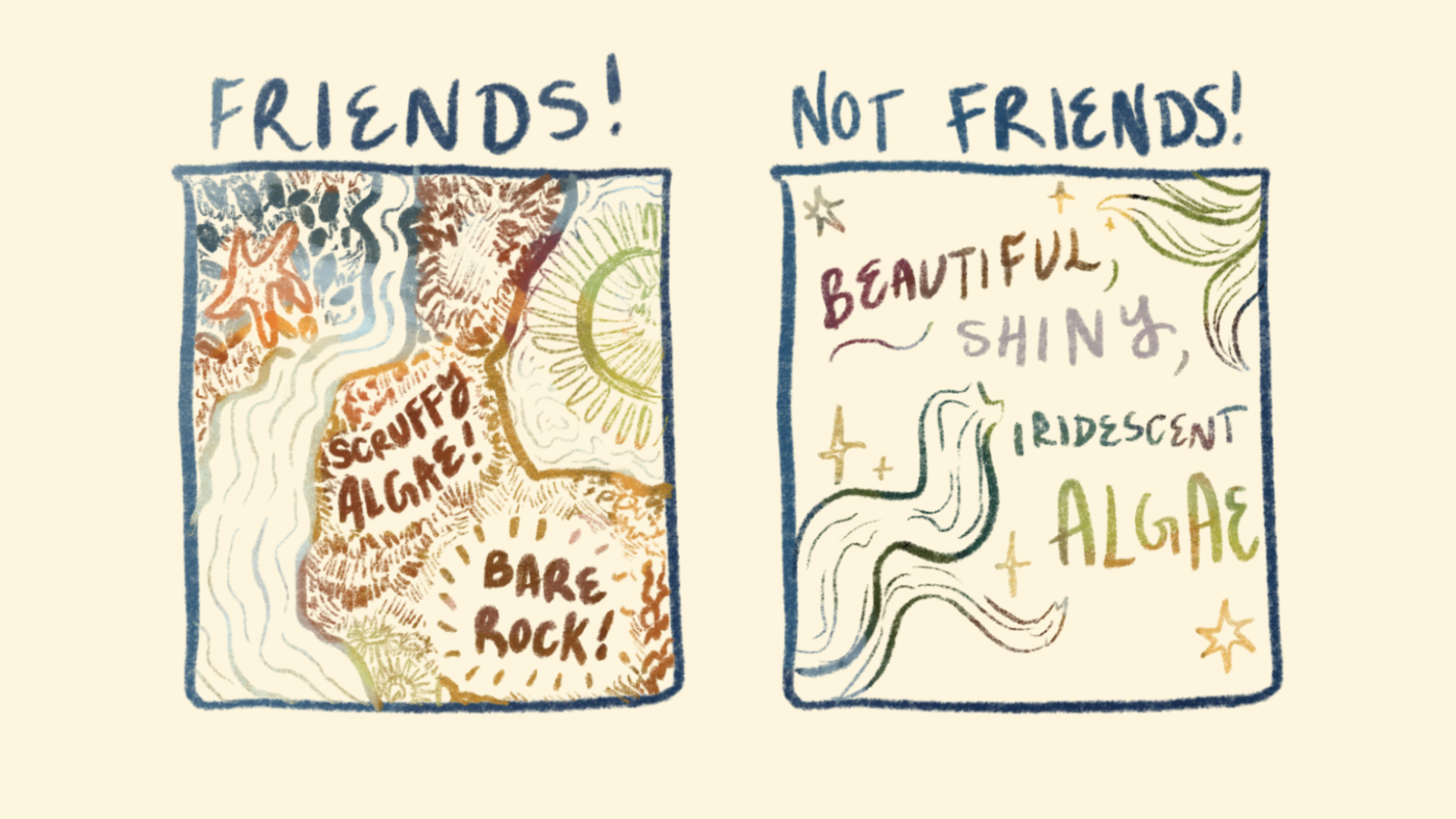
Also: Bare rocks and scruffy seaweeds are gonna be your new best friends in helping you not fall on your butt. Shiny seaweeds and mossy-looking green algae are not.
5. Get on iNaturalist — it’s free, it’s useful, & it makes you feel like a Pokémon trainer
The maps on this site are powered by community members’ uploaded photos (aka “observations”) of nature they see. If you want to find out what weird and cool nature people are seeing in your area (wherever in the world you are), iNat is a great first place to search. Whether you’re looking up species on your computer before heading out or using the mobile app to help identify an animal you see while out exploring, iNat is a fantastic digital field guide for tide pools (and most places, really) — I find that learning what I’m looking at makes the tidepooling experience extra rewarding.
When it comes to tidepooling, I like to look at a map view, search the specific location I want to visit (e.g., “Abalone Cove” or “Pillar Point”), and adjust the orange-colored custom boundary to encompass the area I anticipate visiting. Then, I click over to the species tab to see what people have documented while they’re out there.
This iNaturalist project gathers observations of the many sea stars, crabs, sea slugs, anemones, sea urchins, and more that have been shared from the LA area in 2023. I like to see where sea stars and shore crabs show up on there — just anecdotally, I find that if people are seeing both of those, there are bound to be at least some rocky areas that other cool rocky intertidal animals might take up residence, whether temporarily or forever. It’s not an exact science, but it’s worked for me so far.
I recently uploaded my 300th observation (and have documented 200 species!) and couldn’t be prouder. And there’s so much more to go — there are folks on the platform who’ve made thousands of observations. Pretty incredible. Gotta catch make observations of ’em all.
LA friends, a few things specifically for you ..
Since I moved to LA, Abalone Cove in Rancho Palos Verdes has been my go-to tidepooling spot. Every time I’ve been, I’ve seen ochre sea stars aplenty, gigantic Kellet’s whelks, sea hares cruising around patches of red algae, and more. There was a month earlier this year when I went almost every weekend, and I saw the same dead porpoise slowly decomposing into the rocks. It did indeed get progressively smellier.
Palos Verdes is full of little coves and rocky outcroppings that make for incredible tidepooling (though some of these sites are quite strenuous to get to, and as I’ve found, might have their access closed spontaneously due to trail safety concerns (in other words, I’m guessing erosion has been doing its grim work in those areas lately).
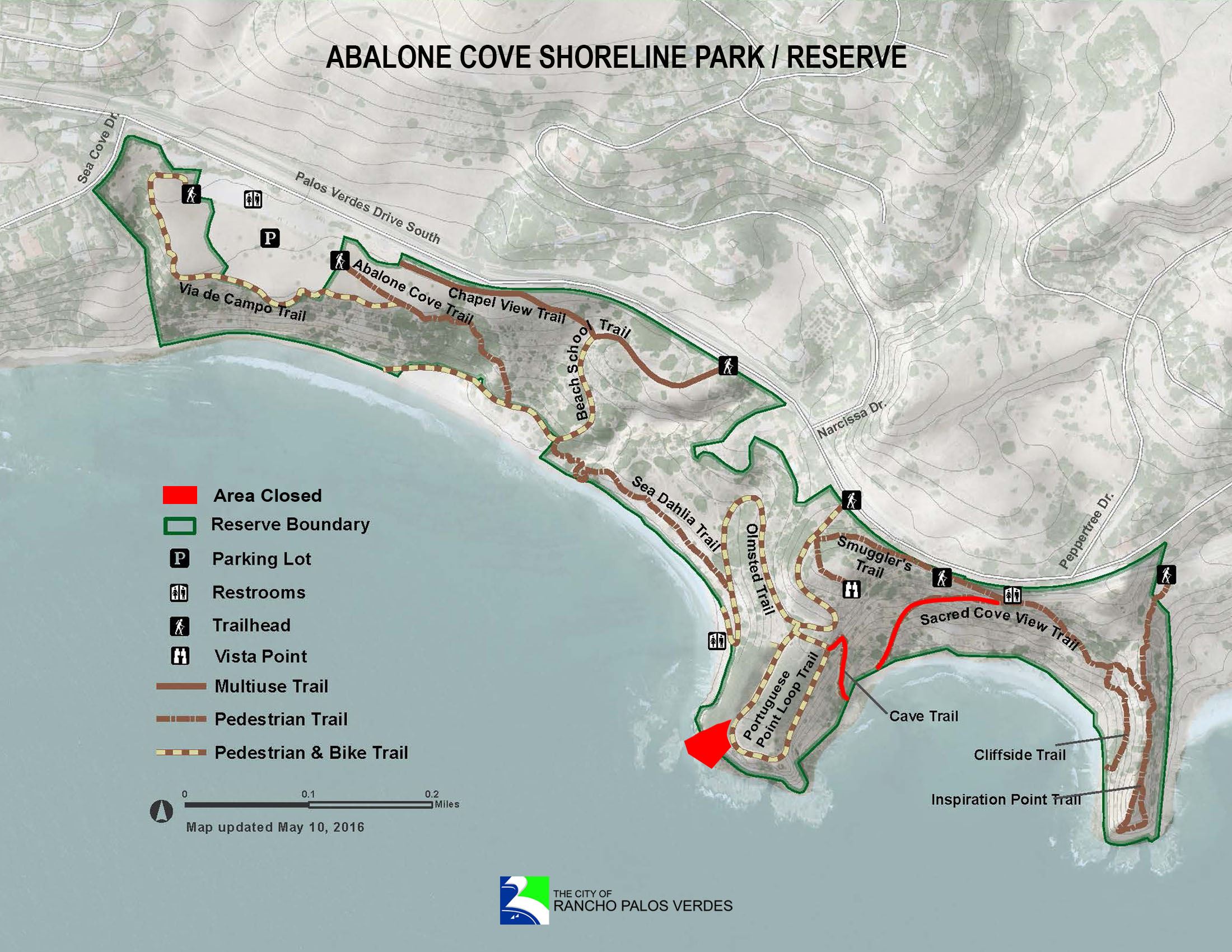
In any case, I’m a frequent user of the Abalone Cove Trail on the map above. It’s a lovely walk that takes you through winding landscapes of native plants that support a stunning array of birds, butterflies, and more. Though heads up, my partner and I did have a run-in with a rattlesnake when we were walking back via that Beach School Trail, which was both incredible and terrifying.
Aside from Abalone Cove, though, I’ve learned that there’s also a surprising amount of intertidal life on human-made jetties and breakwaters. There are some of those in Playa del Rey and Venice that I think are worth exploring — I’ve seen sea star sightings, shore crab observations, and more. Built environments support a shocking amount of life; if you look down from a harbor, you could see everything from colorful sponges to extravagant cnidarians to stingrays along the seafloor (and don’t even get me started on the birds).

Other LA rocky intertidal sites on my explore-soon list, North to South
based on Internet suggestions & my own lurking of where people have observed sea stars/shore crabs
In Malibu …
El Matador beach (one of three smaller beaches here)
In Santa Monica & Venice …
Along the piers! There’s always a surprising amount of nature making homes there!
In San Pedro …
I’ve only been to a handful of these, but I’m making it a goal for myself to check them all out AND to make note of what’s most important to know about each of them, whether it’s logistics of getting there or extra-special species you might see there. On that note …
I’m in the process of documenting key, site-specific tide pool info in this entirely free-to-access database.
Stay tuned for more updates to come!

Last thoughts:
If you by chance make it out to California tide pools before or on December 27, keep a special eye out for sea stars — scientists need help documenting as many sea stars along the coast as possible so they can figure out how to better protect these amazing animals in the long run. More info on how you can help here.
Please don’t take stuff from the tide pools. Just don’t. Sometimes a small bucket or container is nice (especially clear ones) if you want to look at critters like sea slugs up close, but please be careful and gentle with these creatures if you decide to go this route. Definitely don’t go peeling anyone off their rocks, yeah?
The geology of LA and the California coast generally (and the story of how these rocky vs. sandy intertidal areas formed) is absolutely wild. I will be embarking on a future rabbit hole about the LA Basin, starting here.
Here are 3 accounts to follow on IG if you’re not already …
I have some, dare I say, exciting news coming here in the next few weeks. Some itty bitty clues already exist in this newsletter issue, heh. More to come!
Thanks for reading seastarya! Subscribe for free to receive new posts and support my work.
